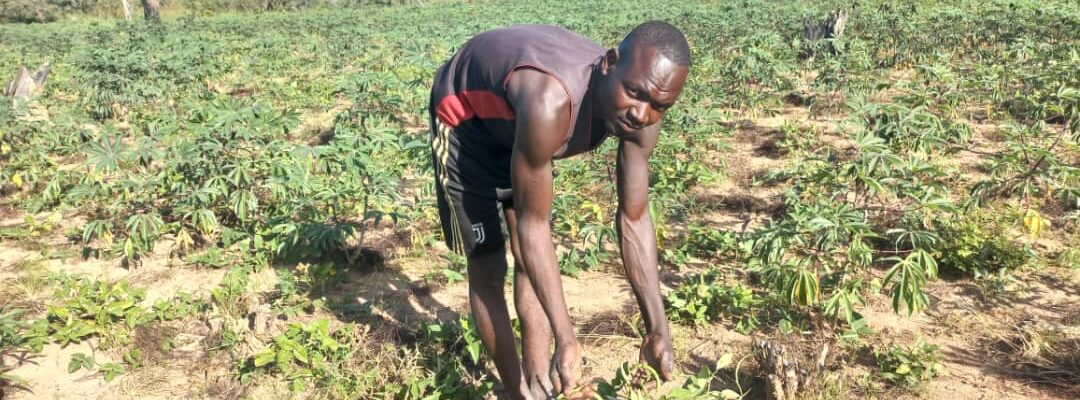Protecting the population from the threat of explosive devices
CAR | 2022 | CBPF
Central African Republic, Bocaranga. Concern and outrage show on the faces of the men gathered in a classroom in the town of Bocaranga, as they are shown illustrations – alongside explanations in the Sango language – depicting different types of explosive devices, their horrific impact and how to minimize risk.
Naketia Paulin, a farmer in his early twenties, says he is worried about the risk he faces when he works in the fields. “I have to leave the town regularly to work in the fields. Sometimes I hear that devices have exploded not far from where we farm, causing injuries and deaths, and I am worried because if I don’t go to the fields, my family might starve,” he told the other participants at the presentation.
The explosive devices are yet another threat in the Central African Republic, where one in four people have fled their homes due to insecurity, 2.2 million people are severely affected by food insecurity and 80 per cent of the population live in poverty.
Between January and November 2022, 11 people were killed and 42 injured in 40 incidents involving explosive devices. Three in four victims were civilians, including 19 children.
The presence of explosive devices severely affects the livelihoods of people, particularly the most vulnerable. “We live in fear because we can no longer go about our business with peace of mind,” says Paulin.
The pictures shown in the Bocaranga classroom are part of efforts to sensitize the most vulnerable people in the area. The project is run by the NGO Humanity & Inclusion (HI) in Bocaranga and financed by the CAR Humanitarian Fund. Women, men and children, including people with disabilities, are educated about the dangers of explosive devices and learn safe behaviours that reduce the risks.
“This session helped me to understand what different types of explosive devices look like and the five key actions to take: stop immediately, retrace your steps, mark the ground, inform the authorities and call the 4040 hotline to report the discovery,” says Sylvie, one of the participants in a session for women.
The explosive ordnance risk education sessions are tailored to the target groups, with sessions for children and sessions for adults, provided in the language spoken by each community. This ensures that everyone has access to the information they need to adopt safe behaviours and enhance their security through threat mitigation.
As of 14 October 2022, 2,500 people, including 1,280 children, 170 people with disabilities and 300 internally displaced persons (IDPs), have benefited from explosive ordnance risk education. In addition, HI has trained 40 humanitarian workers in Ouham-Pendé on the risks associated with explosive devices.
To ensure rapid reporting and response in case of discovery of explosive devices, the project, in collaboration with the United Nations Mine Action Service (UNMAS), provides participants with an emergency telephone number. A major poster and radio campaign is planned to educate as many people as possible about protective measures.
“I didn’t pay attention to objects on the road before, but now I know that we have to be very careful with all unidentified objects, particularly those shown to us during the training. I am ready to inform those around me about how to save our lives,”says Paulin.
More information on the Central African Humanitarian Fund:
OCHA – POOLED FUNDS DATA HUB – By Country (unocha.org)
https://www.unocha.org/central-african-republic-car/about-car-hf
